Cyprus New Year
29 December 2002 - Changing Moods
A week in Cyprus from 28 December 2002 showed some of the
changing moods of Cyprus.
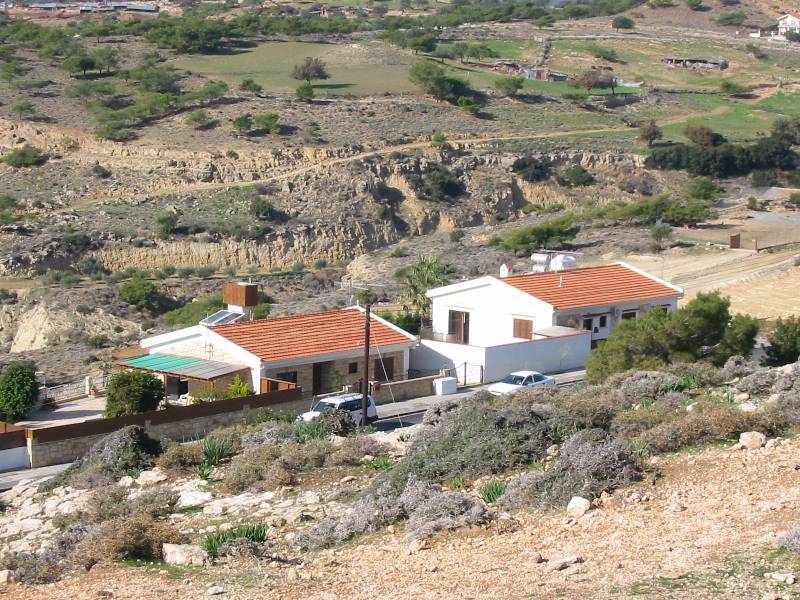
The six of us stayed in Kambos and Trahonas
villas in
Pissouri, pictured
here from the Traxonas trig point, 276m above sea level. For your perfect
holiday Cyprus villas, try
exclusively-cyprus.com

A 360° panorama from the summit of Traxonas at 12.10pm on 29 December.

As the cloud starts to build, a view at 2.30pm across Pissouri Bay to the
Akrotiri peninsula with Limassol just visible beyond

From Kambos by 3pm on the same day.
31 December 2002 - A Trip into the Mountains
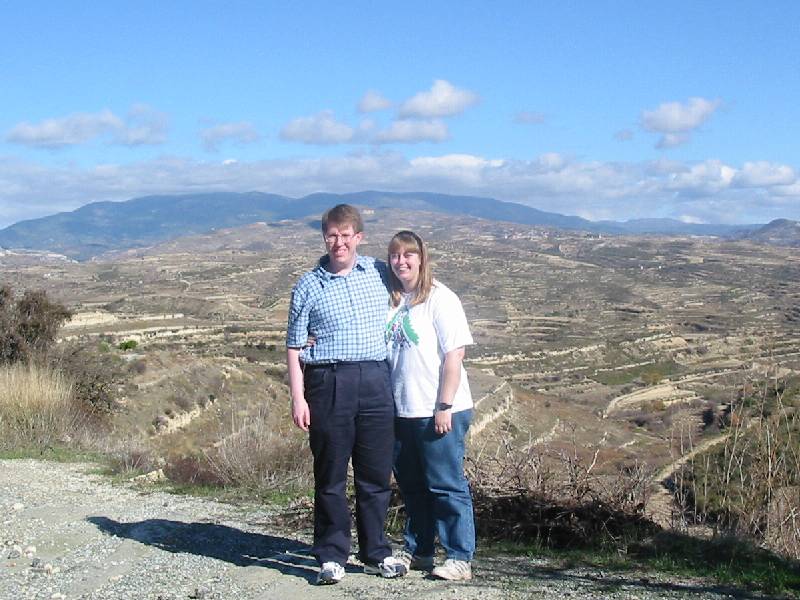
Stephen and Lucy with the Troodos Mountains behind

An hour or so later, Lucy and Debbie near the top of Mount Olympus, about
1850m above sea level.
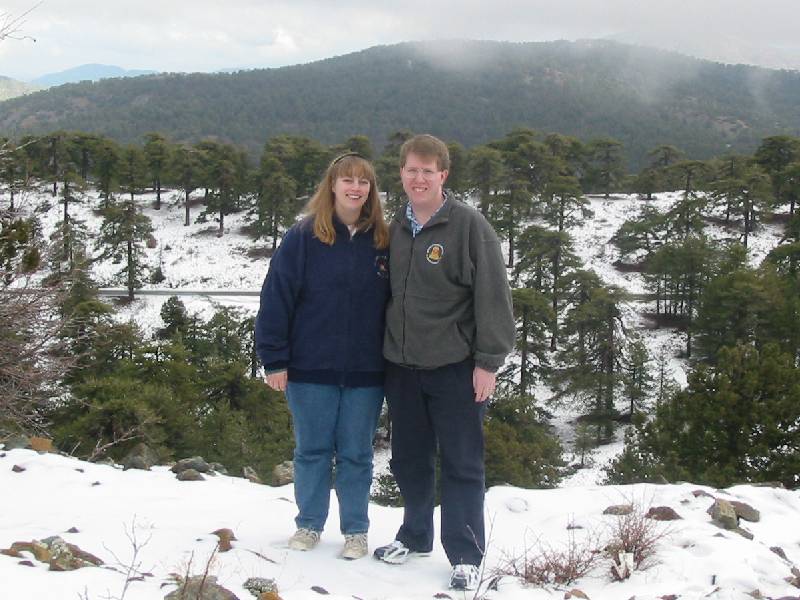
Lucy and Stephen
2 January 2003 - A Visit to Northern Cyprus
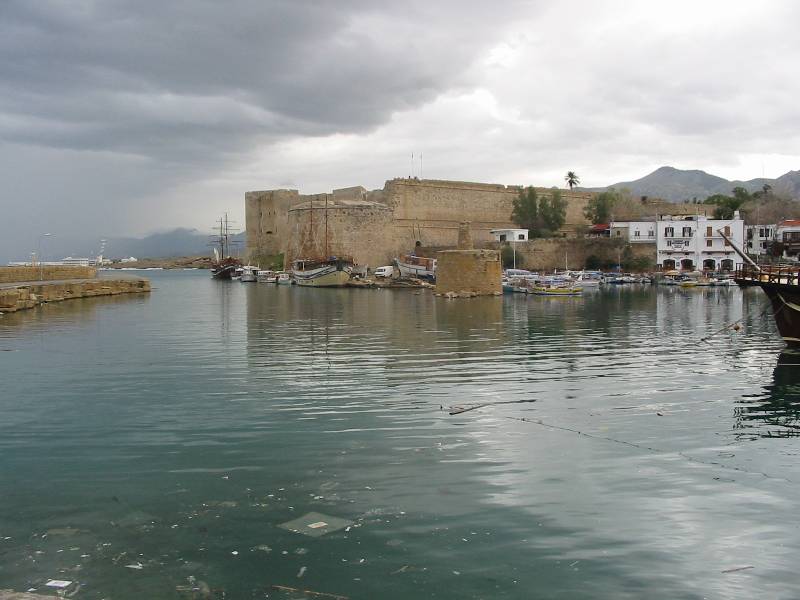
Kyrenia Castle from the harbour wall

The harbour from where we had a mid-morning drink
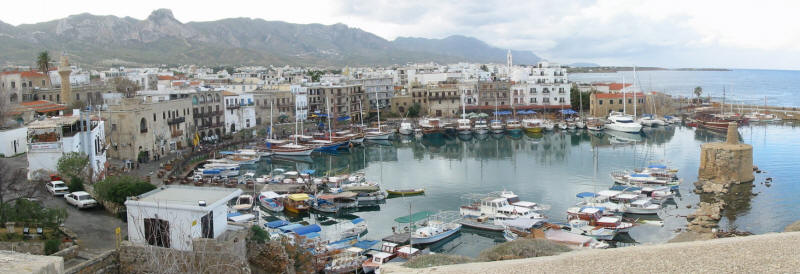
Another view of the harbour, this time from the top of the Castle
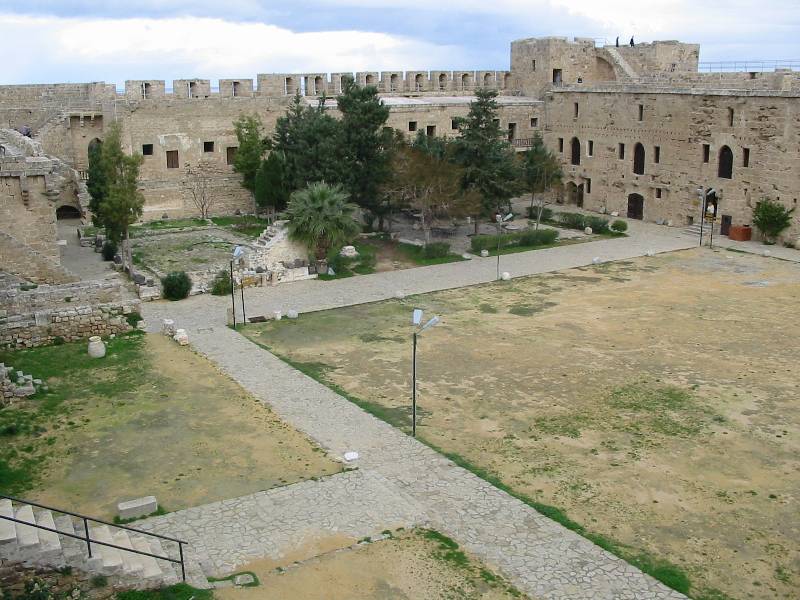
Inside the Castle. The origins of the Castle are thought to date back to the
7th century BC, though the first historical reference is in 1191 when King
Richard the Lionheart captured it. In its present form it largely dates from
Venetian period (1489).
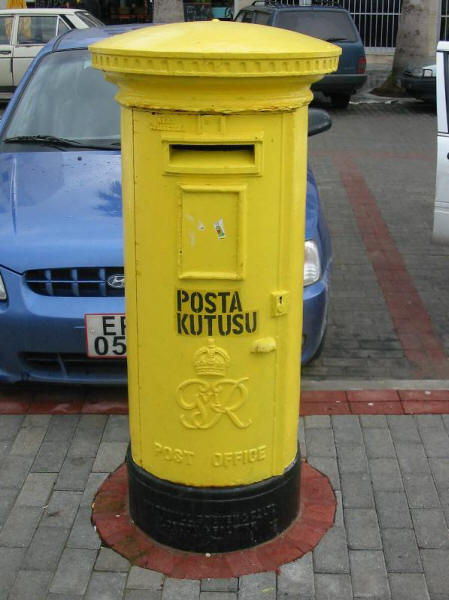
A letter box, still proudly proclaiming George VI as King, on the harbour
front in Turkish-occupied Kyrenia
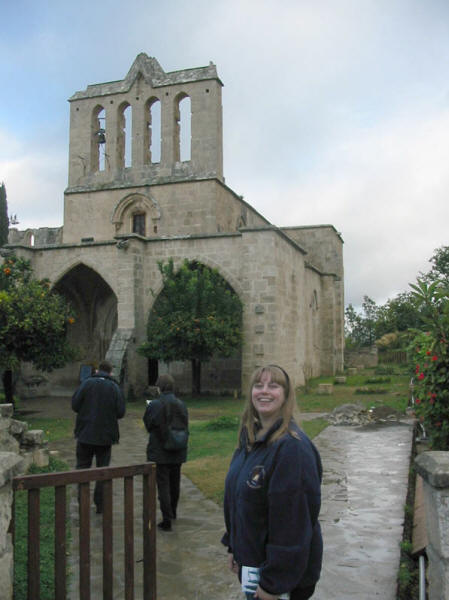
Lucy and the bell-tower of Bellapais Abbey. The present-day name is a
corruption of Abbaye de la Paix, or Abbey of Peace.
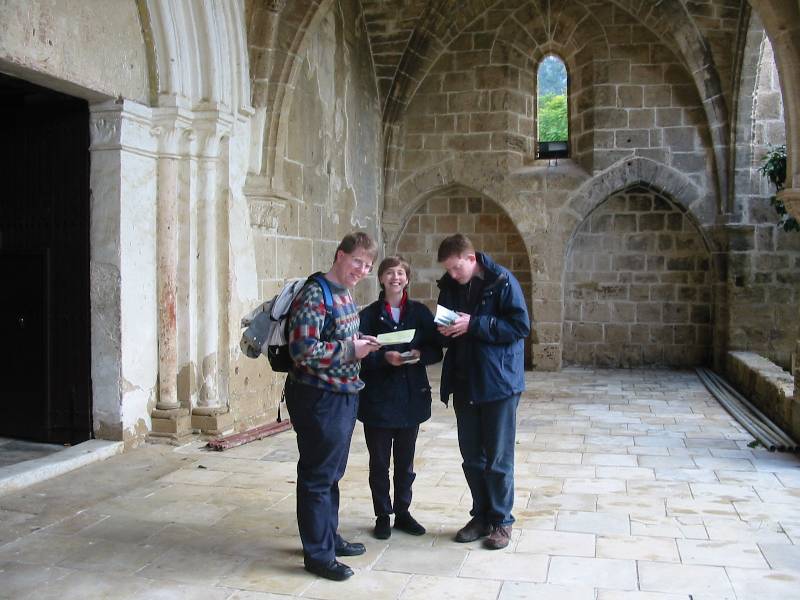
Consulting the maps of the Abbey.
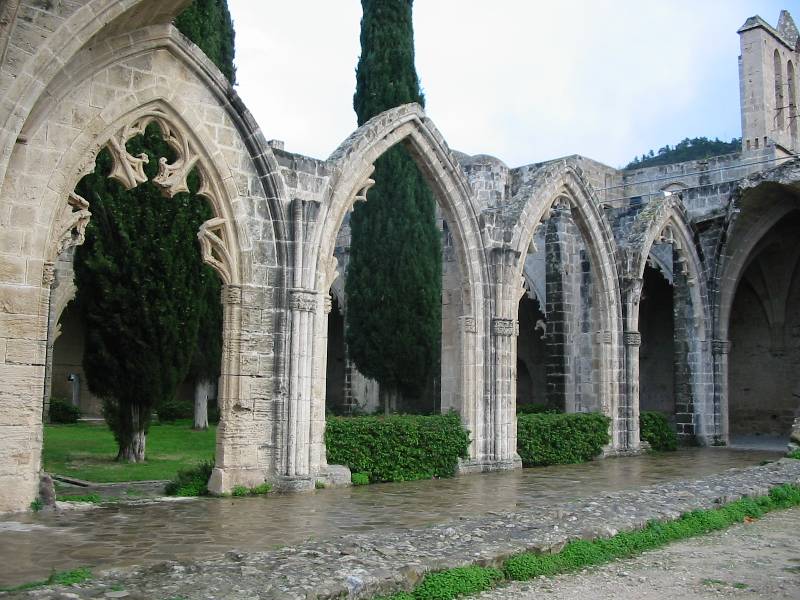
The construction began in 1198 by Augustinian monks, with additions in the
13th to 15th centuries. Following the Ottoman conquest, the monks were turned
out and the building given to the Greek Orthodox Church.
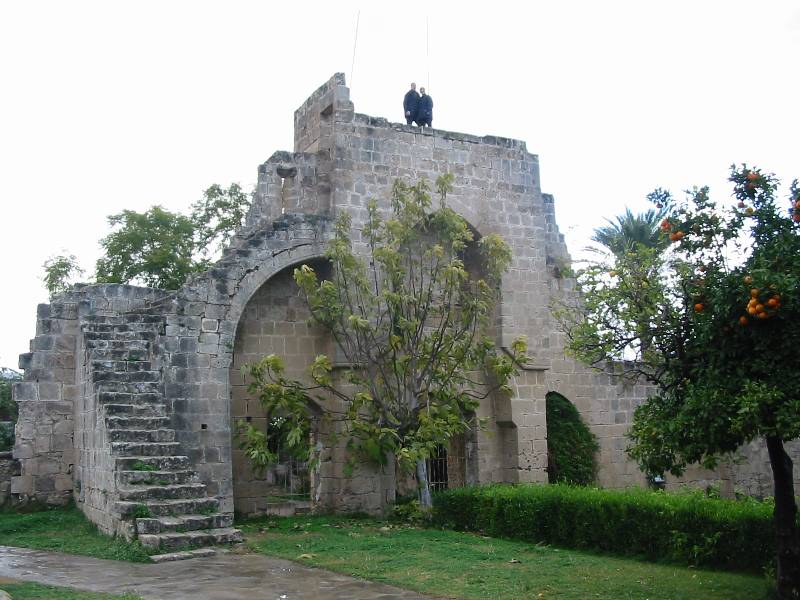
Mark and Debbie up high. (And it did feel high, too!)
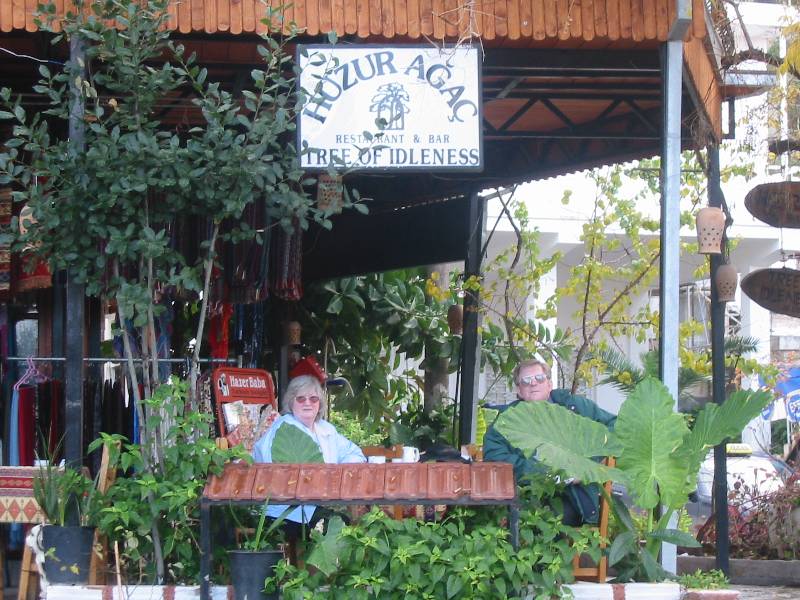
Relaxing over coffee
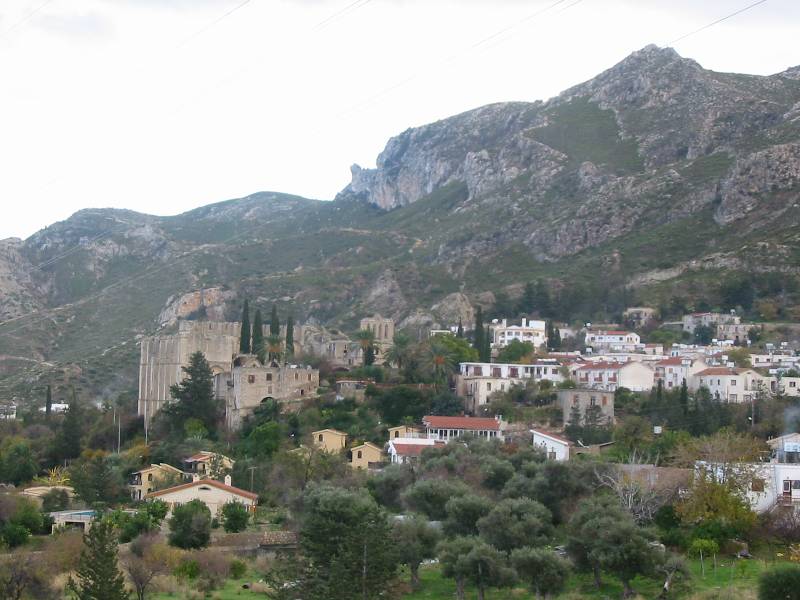
The Abbey from a distance, nestled into the side of the mountain range
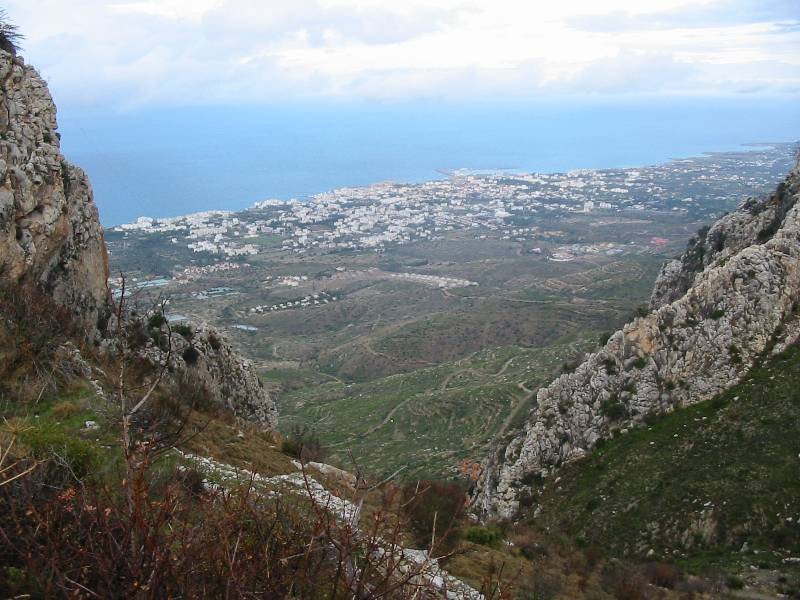
Kyrenia from the base of the remarkable castle of St Hilarion, some 630m
above sea level.
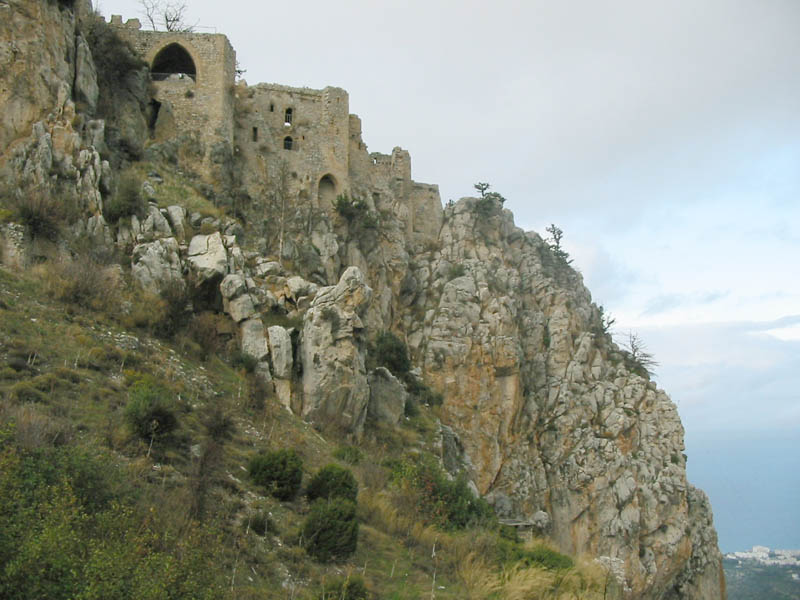
The Castle takes its name from a runaway saint who lived and died at the top
of the mountain after the capture of Jerusalem by the Arabs.
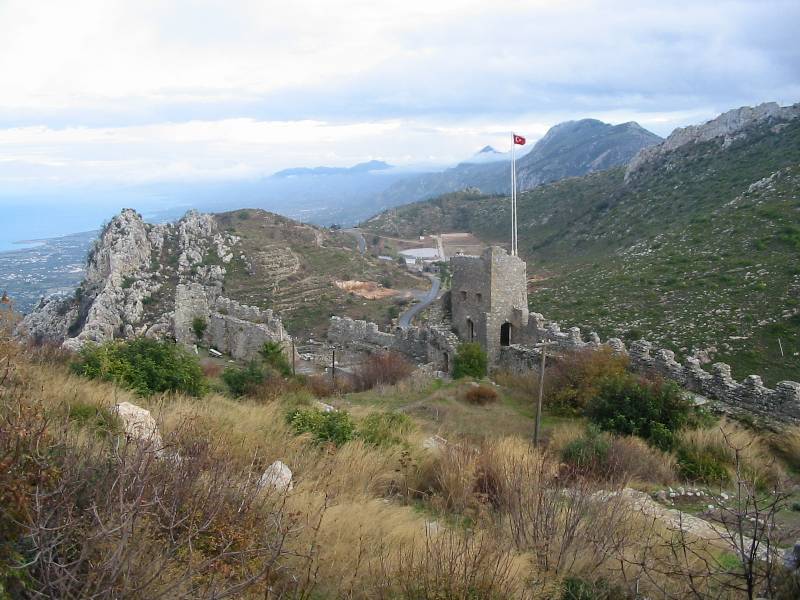
It was started in the 10th century to protect the island from Arab pirates.
Later, from the end of 12th century until the capture of Venetians, the castle
was enlarged and used as shelter to protect Luzinyen nobles from excessive
summer heat.
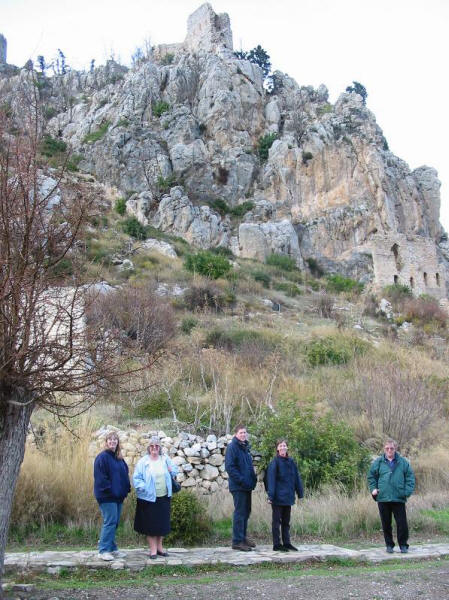
The top of the Castle is a further 100m above us here, at 730m above sea
level.
3 January 2003 - Nearly Time to Go Home

A stroll along the road from the villas to the end showed how a bit of rain
can transform areas from dusty brown in the summer to quite green in places in
winter.
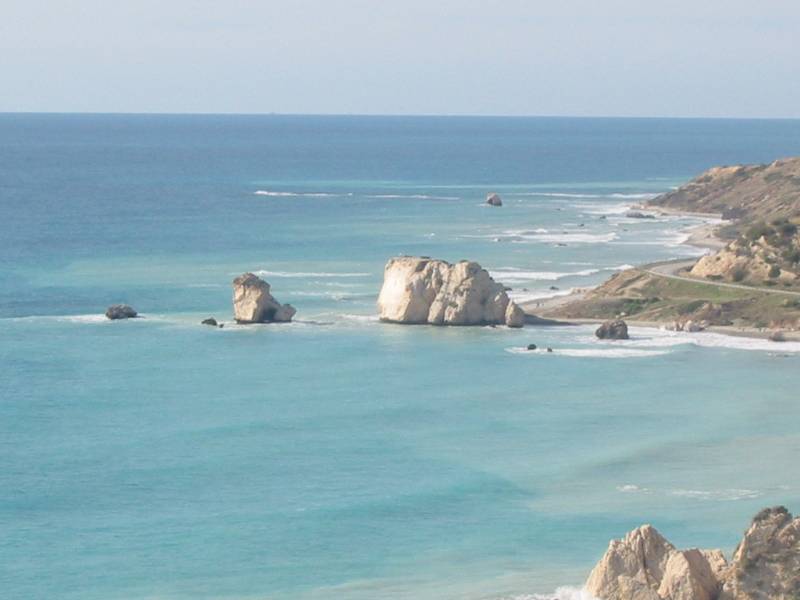
The Rock of Aphrodite, a few kilometres to the west of Pissouri. Its Greek
name is Petra tou Romiou or ‘The Rock of the Greek’. Legend has it that
Aphrodite, goddess of love and beauty, rose from the waves in this strikingly
beautiful spot. There are several versions of the story of the goddess's birth,
but the most famous is that Aphrodite rose naked from the sea on a scallop
shell. Blown by the wind, Aphrodite's first stop was on the island of Cythera,
but this was such a tiny island that Aphrodite kept moving and eventually got to
Cyprus, where she began living in Paphos.
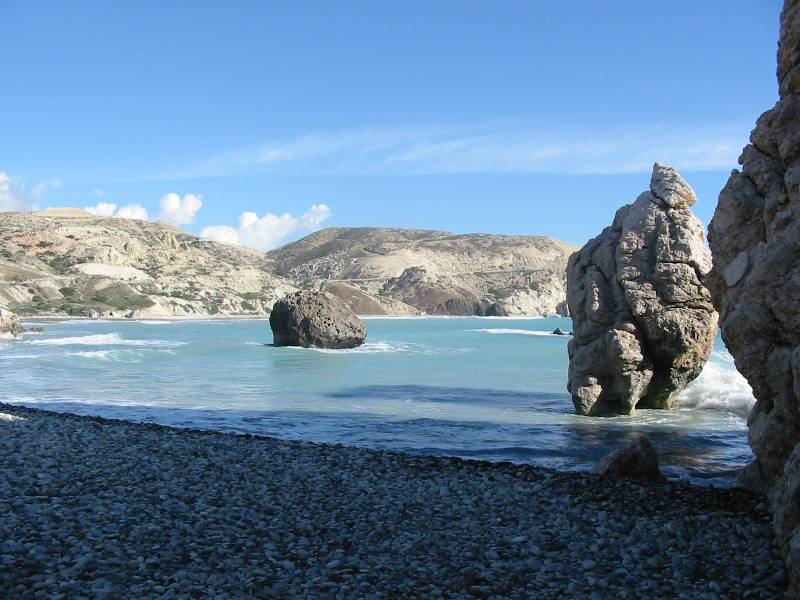
A view of the sea from next to Aphrodite's Rock.
|
























